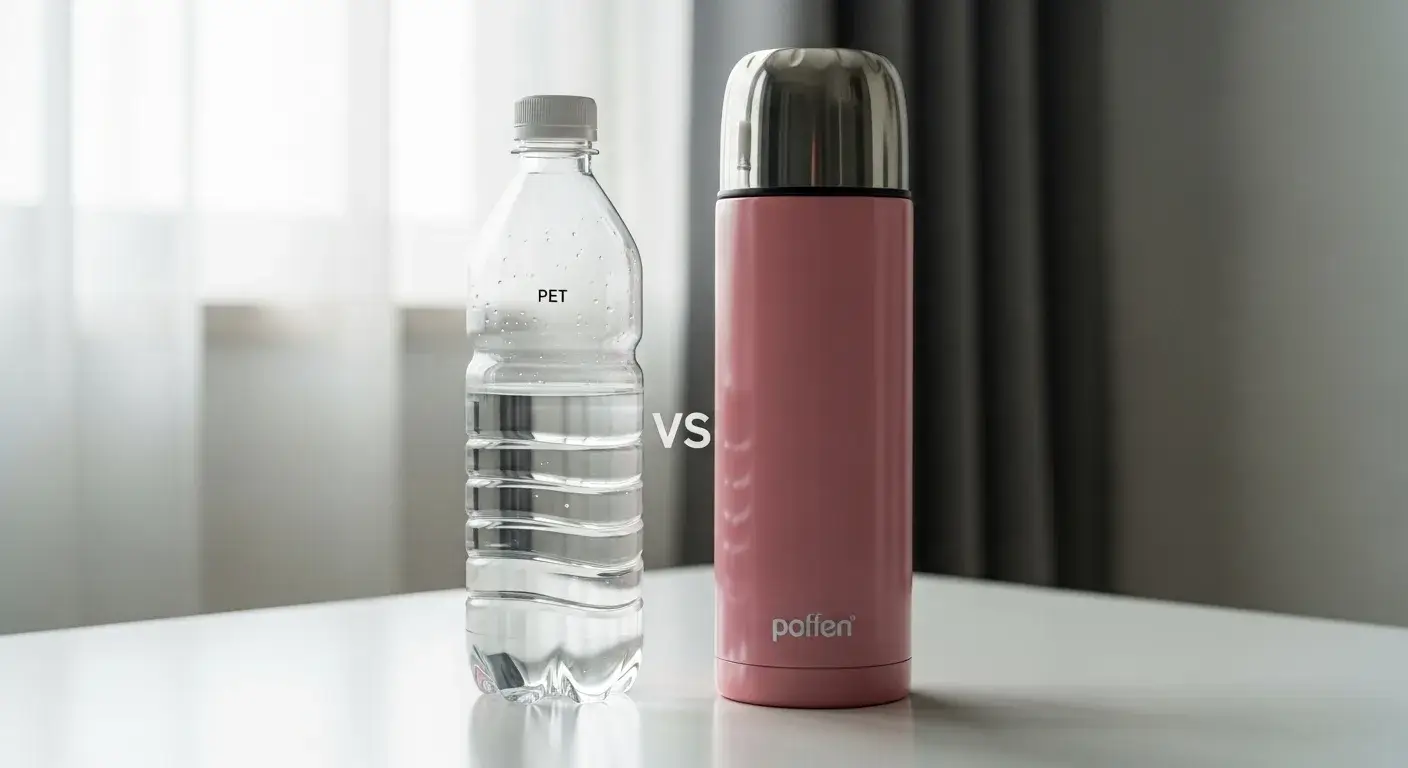
Wondering how your favorite water bottle is made?
From PET pellets to stainless steel, here's everything you need to know.
Water bottles are made through injection and blow molding for plastic types, and hydroforming and welding for stainless steel types.
Read on to understand each process, compare materials, and discover quality and sustainability insights.
What Raw Materials Are Used to Make Water Bottles?
Plastic water bottles are typically made from PET plastic resin1, while reusable metal bottles use 18/8 stainless steel.
PET resin and stainless steel are the primary materials for plastic and metal water bottles, respectively.
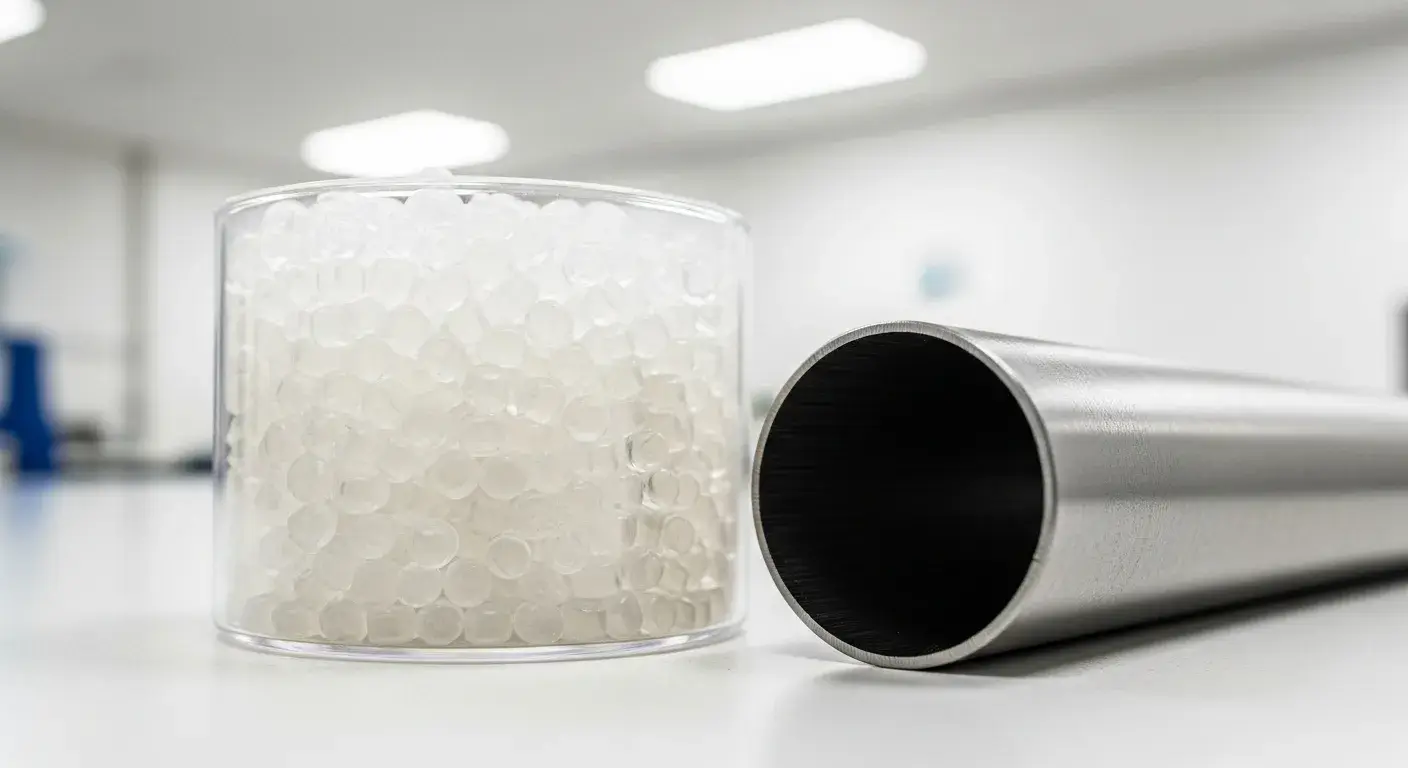
Raw Material Breakdown
- PET: Lightweight, recyclable plastic from petroleum
- 18/8 Stainless Steel: Durable, corrosion-resistant, food-safe
| Bottle Type | Material | Notes |
|---|---|---|
| Plastic | PET Resin | Derived from petrochemicals |
| Metal | 18/8 Stainless Steel | Used in insulated bottles |
| Caps/Lids | BPA-Free Plastic | Injection molded, sealed |
How Are Plastic Water Bottles Manufactured?
Plastic bottles are made in two stages: preform creation and blow molding.
PET pellets are melted into preforms, which are then reheated and blow molded2 into bottles using compressed air.
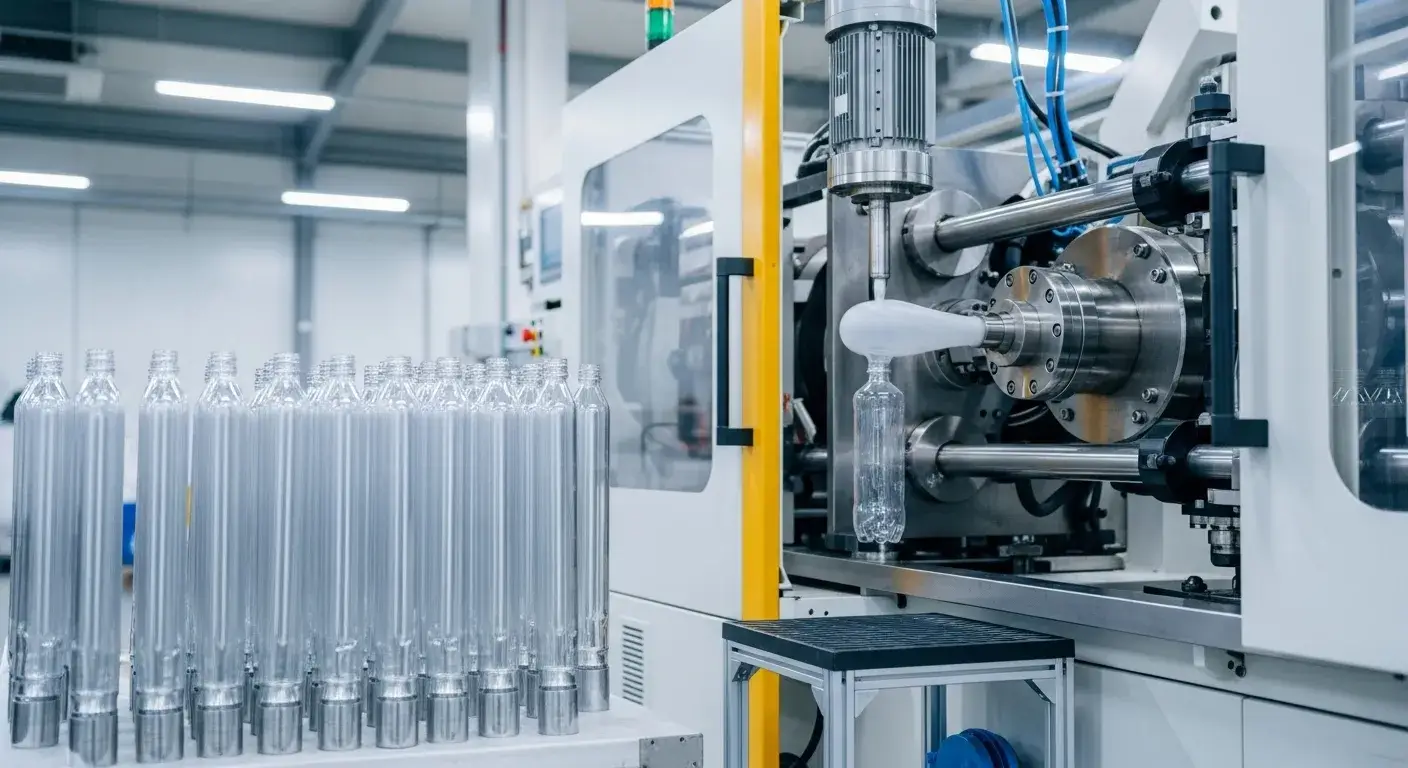
Step-by-Step Process
- PET pellets are fed into injection molders
- Preforms are created in small, test-tube shapes
- Preforms are reheated
- Compressed air inflates them into molds
- Bottles are cooled and trimmed
What Is the Injection Molding and Blow Molding Process?
Injection molding makes uniform preforms, while blow molding shapes the final bottle3.
Injection molding forms the preform; blow molding expands it into a full bottle.
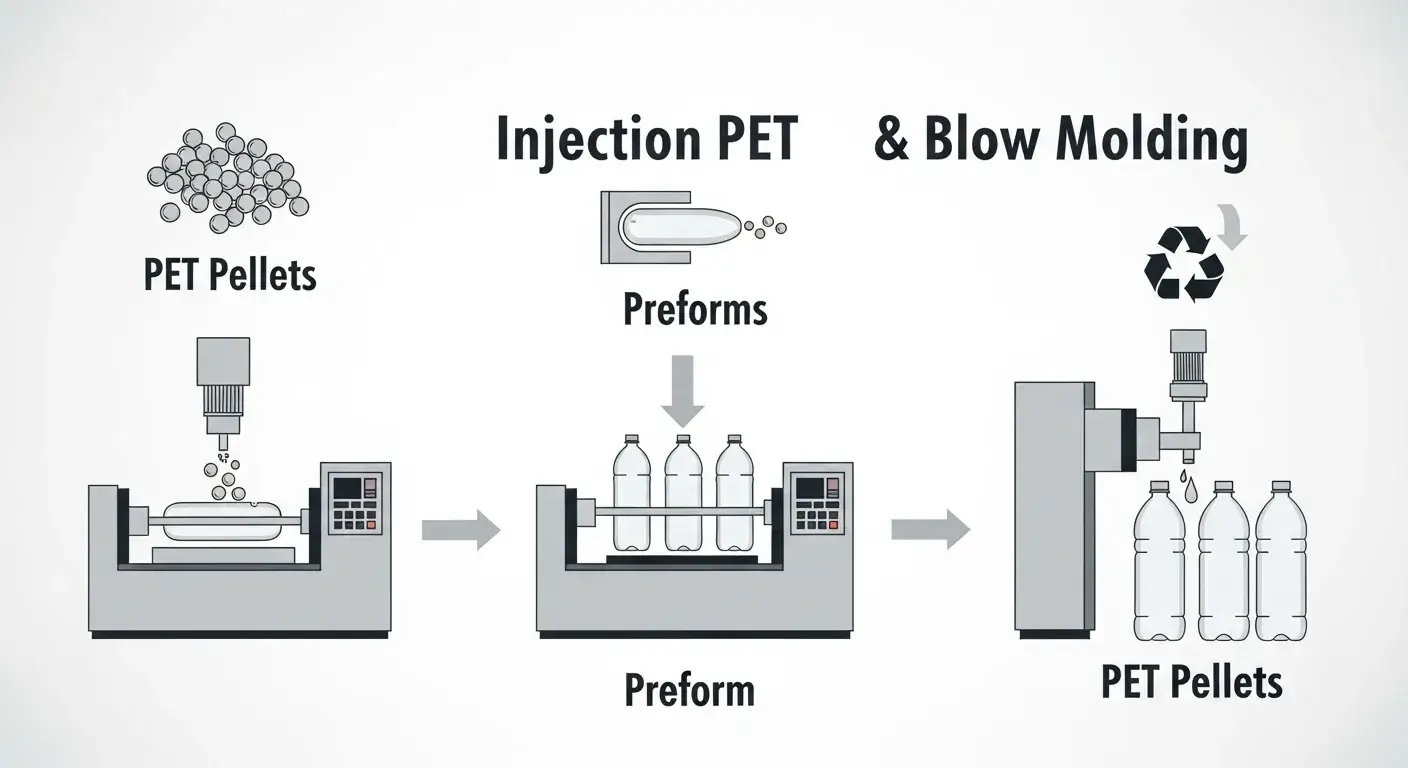
Key Benefits
- Fast and scalable for high-volume production
- Consistent wall thickness and shape
- Allows for custom bottle designs
How Are Metal Water Bottles Made?
Metal bottles use a completely different method involving cutting, forming, and sealing stainless steel.
Hydroforming expands stainless steel into bottle shapes; the inner and outer shells are then welded and vacuum sealed.

Production Steps
- Cut stainless steel tubes
- Form into inner and outer shells using hydroforming or deep drawing4
- Insert and weld together at top and bottom
- Apply vacuum insulation
- Clean, polish, and finish with coating or print
What Quality Control Steps Are Involved in Water Bottle Production?
Quality checks are essential to ensure safety, performance, and consistency.
Each bottle undergoes leak testing, thickness inspection, and visual review for defects.
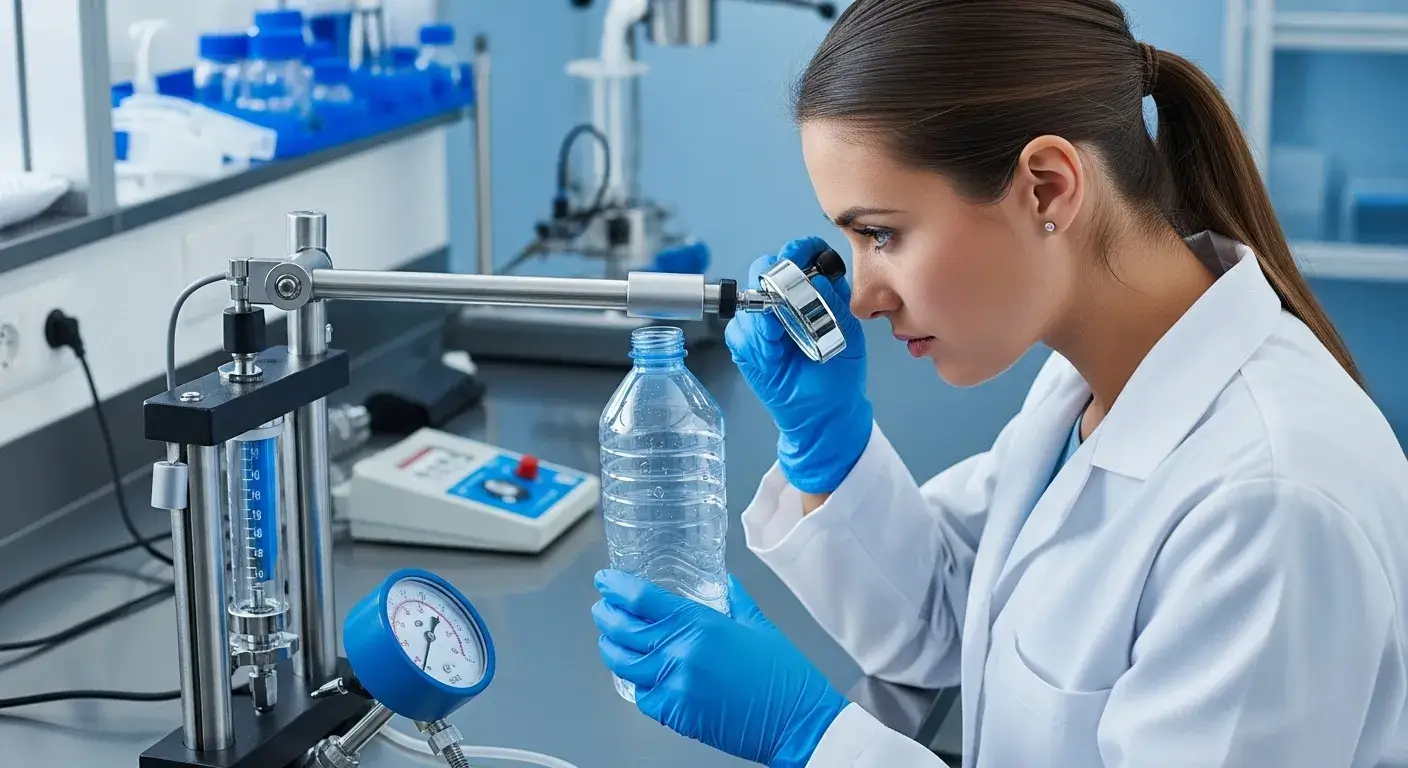
QC Checklist
- Visual check for cracks, dents, or deformities
- Leak testing with air or water pressure
- Thickness and vacuum integrity checks (metal bottles)
- Label accuracy and barcode scans
How Are Water Bottles Labeled and Packaged?
After inspection, bottles are labeled with branding and batch codes, then shrink-wrapped or boxed.
Labeling uses adhesive labels, ink printing, or laser marking depending on the bottle type.
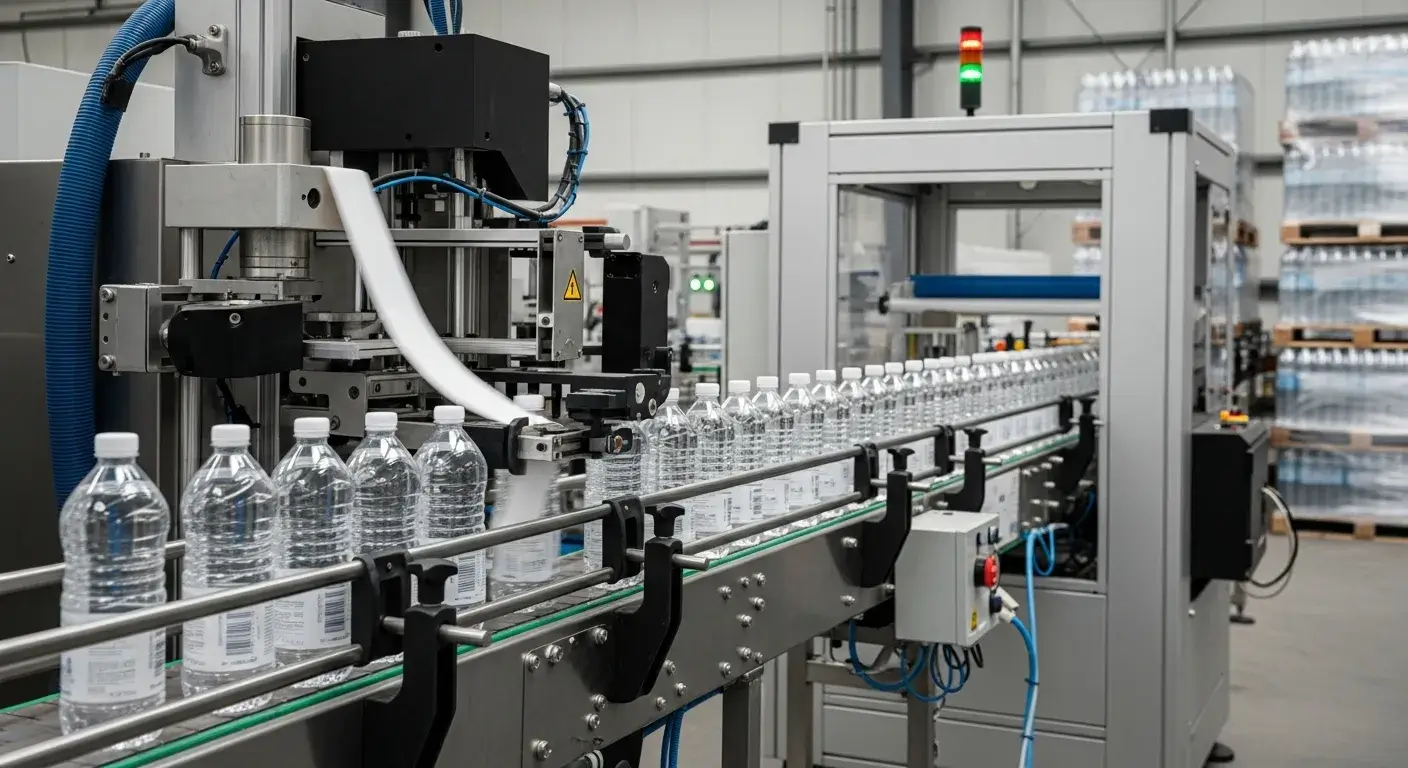
Packaging Details
- Automated labeling systems ensure speed and accuracy
- Shrink wrap protects from dust and scratches
- Boxes or pallets used for bulk shipment
What Are the Environmental Considerations in Water Bottle Manufacturing?
Producing water bottles involves energy use and raw material sourcing. Sustainability efforts help reduce the impact.
Plastic production uses fossil fuels; metal bottles consume more energy but last longer and are reusable.
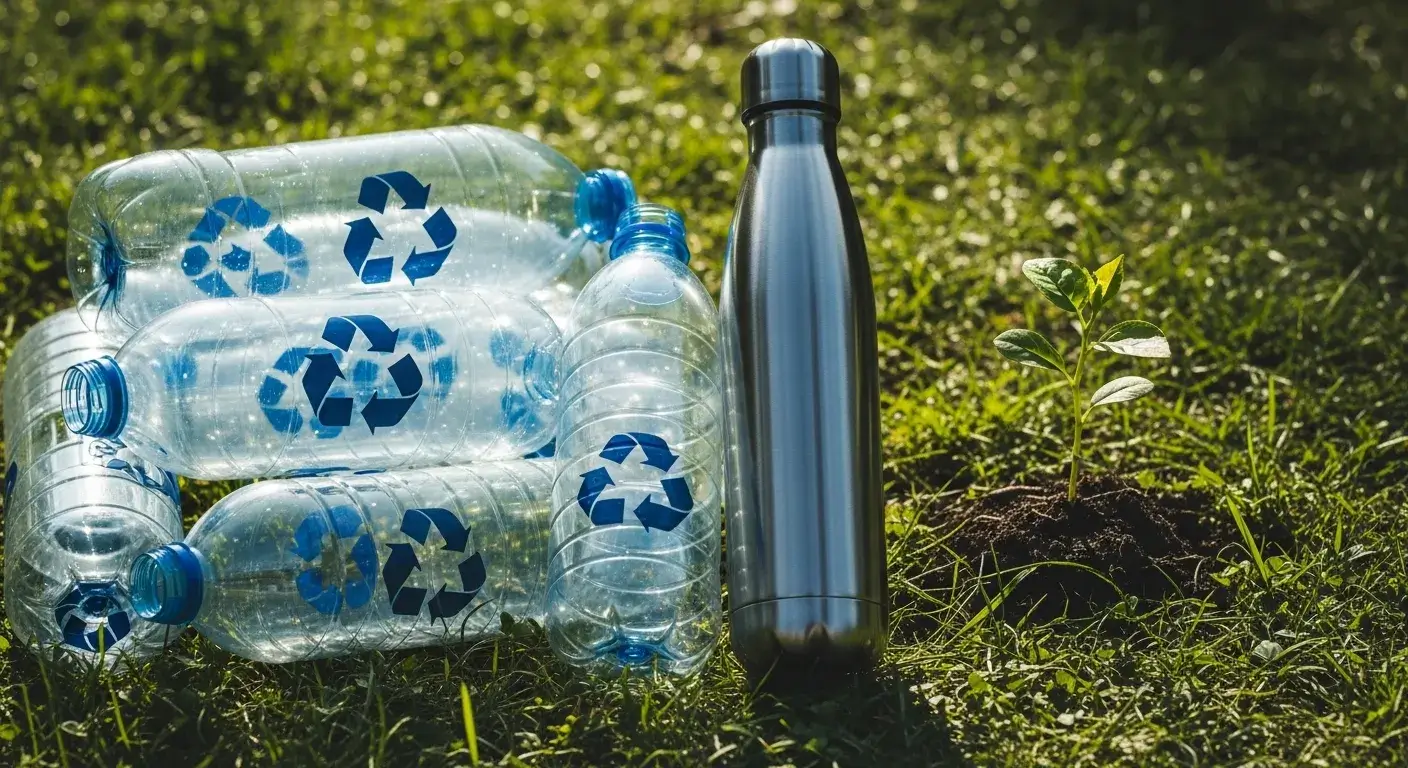
Environmental Insights
- PET is recyclable but often ends up as waste
- Stainless steel is more eco-friendly long-term
- Many brands now use recycled PET or biodegradable plastics
- Emissions and water use vary by production method
Conclusion
Water bottles are made from either plastic or stainless steel using molding or forming processes, followed by strict quality checks and packaging.
FAQs
How long does it take to make a water bottle?
Plastic bottles are made in seconds; metal bottles take several minutes due to more complex processes.
Can water bottles be made from recycled materials?
Yes, many PET bottles use recycled plastic, and metal bottles can be made from recycled steel.
What’s the difference between blow molding and injection molding?
Injection molding creates preforms; blow molding inflates them into bottles.
Are all plastic water bottles recyclable?
Most PET bottles are recyclable, but check local facilities for acceptance rules.
Which type of water bottle is safer?
Both are safe if made from food-grade materials; stainless steel is more durable and reusable.
Footnotes:
-
PET is widely used in beverage bottles due to its clarity and recyclability ↩
-
Blow molding expands preforms into final shapes using compressed air ↩
-
Combining injection and blow molding allows efficient, high-volume production ↩
-
Hydroforming and deep drawing yield strong, seamless metal bottle shells ↩

